
Great Stays You Might Have Missed
[caption id="TheWayfarersDelight_Feature" align="aligncenter" width="1024"]
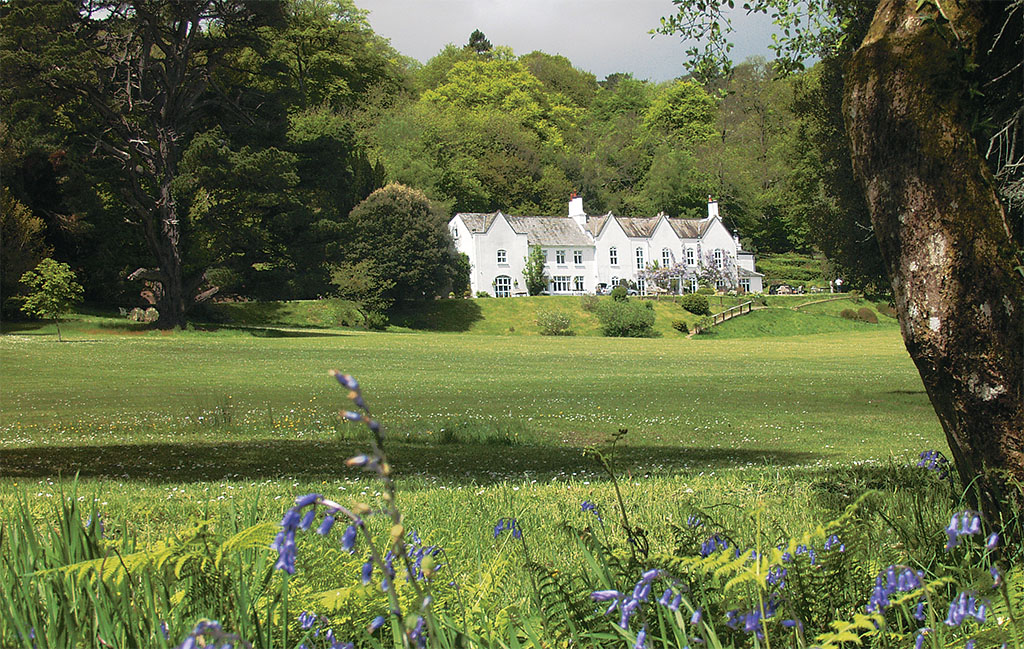
COURTESY OF THE HOLNE CHASE HOTEL
All your favorite British Heritage writers have been traveling our island for years. They are pleased as punch to share with readers their favorite stays in town and country in case you’re in the neighborhood.
[caption id="TheWayfarersDelight_img1" align="aligncenter" width="769"]
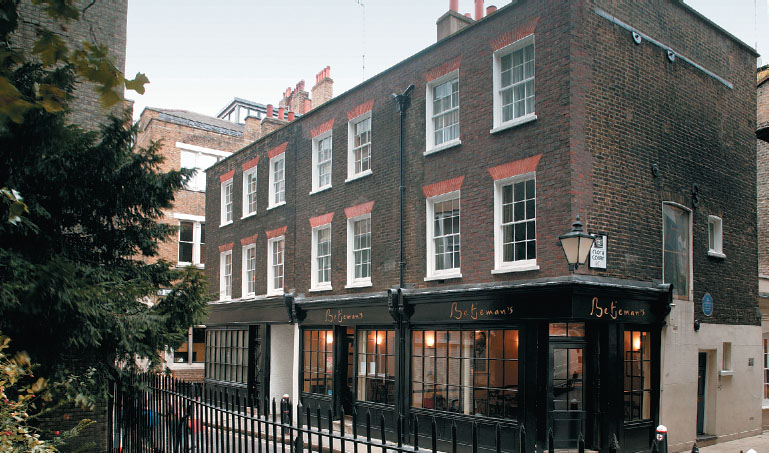
COURTESY OF THE LANDMARK TRUST
Jennifer Dorn Dotes on Cumbria and The City
THERE IS A HOUSE in the English countryside and a flat in the middle of London that are obviously quite different from each other, yet each offers a touch of history and a haven from the busy world. These are my two very favorite places to stay in England.
As you approach the small stone house known as Church Brow Cottage from the churchyard of the 11th-century church of St. Mary’s, nothing prepares you for its inner charm and the incredible natural beauty spread out beyond its front door. The cottage was built in 1830 and is located in the market town of Kirby Lonsdale in Cumbria on the fringe of the Lake District. It is now owned and rented out for brief stays by the Vivat Trust, a charity established in 1981, which rescues neglected and dilapidated historic buildings. In 1875 John Ruskin wrote that it was “one of the loveliest scenes in England, therefore the world” when he looked out on the rolling green fields surrounding the brick cottage.
Perched on a steep bank of the Lune River, the view from Church Brow Cottage never ceases to awe me; it is the same view immortalized by William Wordsworth in his Guides to the Lakes of 1810 and by J.M.W. Turner in a watercolor he did in 1818. The cottage is built on three levels; narrow winding steps lead from the kitchen and bathroom on the ground floor to the delightful bedroom at the very top. A special treat is the freestanding roll top bathtub that sits in front of a window with a very private view of the fields beyond. On the first floor, the cozy sitting room has a fireplace and bookshelves all around, and opens out onto terraced gardens full of colorful plants and flowers.
[caption id="TheWayfarersDelight_img2" align="alignleft" width="778"]

COURTESY OF EURO RELAIS
The cottage’s Radical Steps, named for an earlier owner of the house who was said to have progressive views, lead down to the river and to Devil’s Bridge, believed to date back to the 13th century. While Church Brow Cottage is quite secluded, the market town of Kirby Lonsdale, population about 2,000, is a short walk away and contains restaurants, shops and little bylanes with names such as Salt Pie and Jingling.
My other favorite place is miles away from Kirby Lonsdale and smack dab in the middle of London. The flat at 43 Cloth Fair was once the home of John Betjeman, who became poet laureate in 1972. On two upper floors over a wine bar, the flat is now owned by the Landmark Trust, another organization that rescues historical and architecturally interesting properties and brings them back to life for shortterm rentals.
This enchanting and comfortable flat is in one of the oldest sections of London; its windows look out on the churchyard of St. Bartholomew the Great, one of the few churches in the city to escape the Great Fire of 1666. Cloth Fair survived the flames as well, and it gives a glimpse of what the city of London was like before much of it was destroyed by fire and war.
Just around the corner are the colorful, ornate buildings of Smithfield Market. Meat has been bought and sold at Smithfield for more than 800 years, making it one of the oldest markets in London. While Cloth Fair is very quiet, especially on weekends when many of the nearby offices are closed, dozens of pubs and restaurants are nearby and the Barbican Centre, with its theater, cinema and concert hall, is footsteps away.
A framed photograph of Church Brow Cottage hangs on one wall of my office; a newspaper clipping about 43 Cloth Fair is also there. Every time these items catch my attention, I smile and am transported back to those magical places.
Jim Hargan Has His Head in the Clouds
THE FIRST TIME I rented a cottage in Britain, beer at the local pub was 70 pence a pint and a pound sterling cost $1.07. Back then, cottages were cheaper than hotels, but it scarcely mattered; an American traveling in Britain didn’t really have to worry about money. Fast-forward a couple of decades, to when beer costs £3 and a pound sterling costs $2. Now cottages are a lot cheaper than hotels—but again, it still doesn’t always matter. Sometimes it’s good to use that savings to do something really special.
The Morcott Hill Windmill is very special indeed. Isolated on a windswept hill, deep in the Rutland countryside, this 60-foot tower has a full set of sails and 360-degree views. Each floor has one room, and each room gets smaller as you go up: a big living/kitchen area, a bedroom, a smaller bedroom and a full bath with views so dizzying that guests don’t mind having to walk up four flights to use it. It’s amazingly comfortable despite the stairs, and handsomely furnished, but that’s not why we love staying there so much. We just can’t get over being in a real windmill. We walk around it, admire it; and when we travel around Rutland, we can see it from miles away. Hey! That’s our windmill!
Of course having a cottage of tremendous funktitude is only part of the experience. Rutland turns out to be a wonderful place to visit. We discovered that England’s smallest county is a corner of village traditionalism, a 30-year time warp back to the days before modernization. Our village, built of golden limestone, huddled around a large green with a duck pond on one side and a pub on the other—an old-fashioned two-bar pub that pulled local beer from the cask. It had good food, too, and picnic tables facing the green. This turned out to be fairly common in Rutland, which has no main highways, only lanes linking one fine old village with another. We made a concerted effort to burn out on all this quaintness, but for all of Rutland’s vaunted smallness, we failed. After a week, we were still as overwhelmed as when we first arrived.
Rutland’s Morcott Hill Windmill remains available for weekly rentals through Euro Relais at www.eurorelais.co.uk.
Claire Hopley Happily Luxuriates at the Courthouse Hotel Kempinski
I LOVE STAYING in swishy city hotels: all that shiny marble, those monumental flower arrangements, the plushly carpeted corridors, the piles of pillows in the room, the sweet little toiletries. Most of all, I absolutely adore hotel spas with their nonsensical music and the chance to loll about pretty much unclothed among ministering presences. Such hotels achieve housekeeping perfection, but usually at the cost of the oddities that often make country hotels so attractive. Of course, I do love staying at country hotels too, but however lavish they are—and lavishness is what I like in a hotel—they can’t offer the shops and nightlife of a major city.
[caption id="TheWayfarersDelight_img3" align="aligncenter" width="757"]
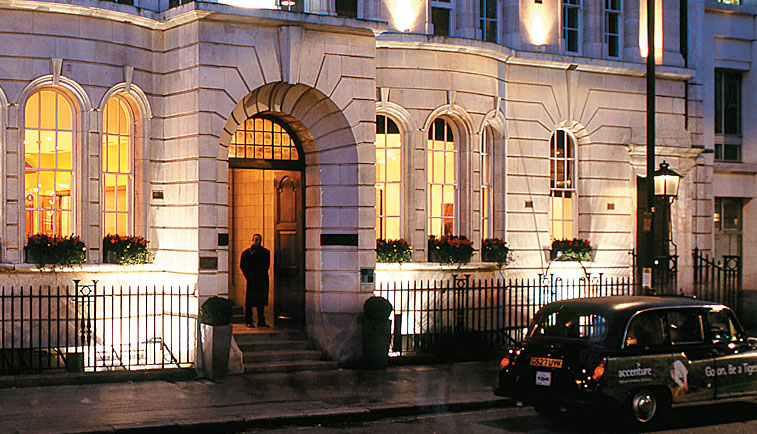
COURTESY OF COURTHOUSE HOTEL KEMPINSKI
[caption id="TheWayfarersDelight_img4" align="aligncenter" width="757"]
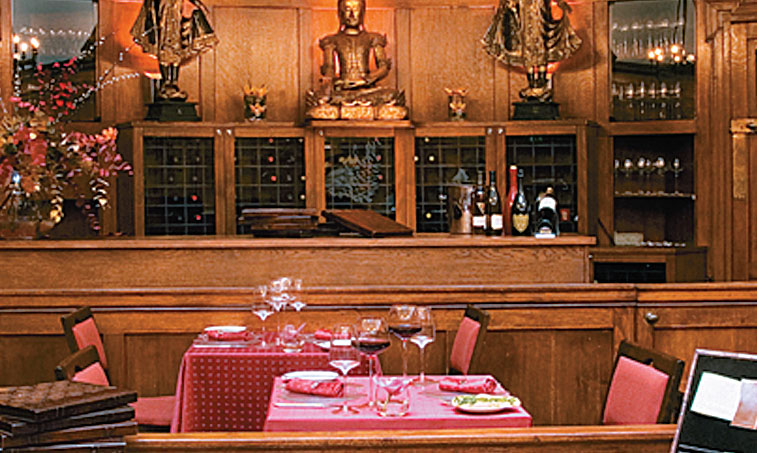
COURTESY OF COURTHOUSE HOTEL KEMPINSKI
Last winter I discovered the Courthouse Hotel Kempinski on Marlborough Street in London, and found both ultra-elegance and crusty bits of history to charm and amuse.
Our room was done in quiet tans and rusts and creams, with everything you could want plus tall, tall windows that had a view of still-funky Carnaby Street. Downstairs is The Carnaby, a bright brasserie, and Silk for serious dining. Here the Courthouse Hotel charisma begins to waft its magic.
Silk occupies the Number One Court of the magistrates’ court, which Kempinski has transformed into this hotel. That transformation, however, could not be total because it is a Grade II–listed building. So Silk still has the judge’s bench, witness stand and dock, while the bar—at first sight ultra-modern—has three women’s holding cells, now converted into niches for private chats, but still with the benches and even the lavatories (no longer functional, fortunately.)
Any court in the center of London has hosted historical figures. This is where Charles Dickens worked as a court reporter in 1835, and Oscar Wilde sued the Marquess of Queensbury in 1895. More recently, John Lennon, Johnny Rotten, Mick Jagger and Keith Richard have all stood in its dock.
While that history spurs the imagination, the Sanook spa elicits quietness because only six or fewer people may use it. Warm and dimly lit, it floats away those not unsatisfactory aches that come from a day’s shopping in Liberty’s (which is opposite the hotel), or in Regent Street, just around the corner. There are theaters nearby too, and the Courthouse Hotel is within easy reach of most major museums and sights. I hope to return. It’s comfortable, interesting—and it’s in the center of London.
Siân Ellis Gets Serene on Dartmoor
I’M STANDING on Dartmoor in the heart of Devon; the great grass expanse bubbles with gorse, bracken and trees, on the horizon the famous tors lift blue skies. I listen to the silence and warily watch a golden/steppe eagle swoop down on me at an alarming rate. He thuds onto my arm and snacks on the morsel in my hand. Breathtaking.
It’s just one of the high points of my “flying experience” with raptor experts George and Elaine Hedges, who keep their birds of prey in mews at Holne Chase Hotel, near Ashburton. Hotel owners Philippa and Sebastian Hughes believe that, these days, guests want more than a luxury country house retreat; they want authentic rural activities, too. So they offer all sorts, from fly-fishing on the River Dart to horse-drawn picnics on the moors and insights into the ancient art of falconry.
[caption id="TheWayfarersDelight_img5" align="aligncenter" width="1024"]
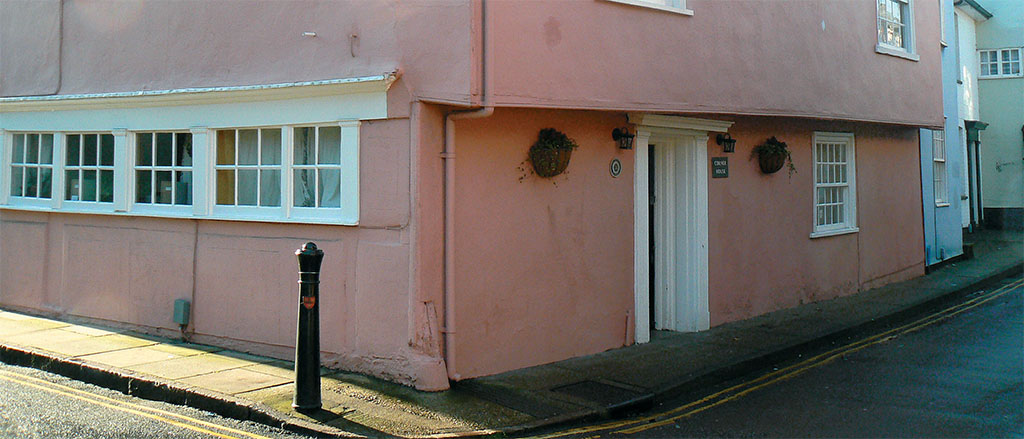
COURTESY OF THE CORNER HOUSE
I arrived at Holne Chase with my better half, David, on a midwinter afternoon. The winding lanes and tree-lined drive to the handsome white hotel promise seclusion; logfire aromas on arrival confirm cozy comfort. Holne Chase was, rather aptly, the 11th-century hunting box of nearby Buckfast Abbey; today it boasts the sort of four-poster-bed luxury with window seats onto sweeping lawns that make me come over all genteel and serene.
After strolls beside the River Dart and through the oak woods that surround the hotel, we dined on lusty local Widecombe beef—the Hughes pride themselves on the low “food miles” of their fare, some of it supplied by their own Holwell Farm up on the moors. A maverick, can-do couple, they bought the rundown farmstead in 2004, did the place up and now underpin the operation with income from farm buildings converted into self-catering cottages.
Holne Chase awoke next morning to frosted lawns and hills crisped orange by the rising sun. I scampered off to learn about raptors with George’s team: how birds are manned (trained) and equipped, traditional wisdoms and modern telemetry tracking. Harris hawk, then golden/steppe eagle took possession of the skies over the moors, soaring, stooping and soaring again. The experience proved more natural flying display than hunt, and I came away with respect both for the raptors’ elegance and a centuries-old partnership with man.
Meantime, David had stretched out with the newspapers in the hotel sitting room, being served tea from a silver tray. Holne Chase is superb for relaxing all day, too! Its Web site is www.holne-chase.co.uk.
Jean Paschke Is Cozy in Colchester
ONE OF THE MOST delightful places to stay in the Colchester area is The Hollies at Great Wigmore. We are always royally welcomed there with Pimm’s cups or gin and tonics in the garden, where doves perch picturesquely on the fountain by the swimming pool. There are escorted drives through the countryside, gourmet meals served by former pub owners, and a tea tray in bed followed by a lavish breakfast.
Oh, what was I thinking? You can only take advantage of this if you happen to be friends of our friends and visit their lovely home. And since they were off to a wedding the last time we were in Colchester, we had to put ourselves at the mercy of the tourist board, and they did not disappoint. They sent us to the Corner House B&B.
The Corner House, once a home and a shop, is in Colchester’s Dutch Quarter, the area settled by Flemish weavers and cloth makers in the late 16th century. The Tudor buildings still stand, and one, partly dating from the 13th century, is a B&B owned by Anne Mimms.
It was delightful to come in out of the drizzle and climb the steep stairs to the largest room in Corner House, the only one fully en suite. The décor is attractive and the room light and airy.
With a comfortable bed covered with a snowy duvet; electric kettle with an array of tea, coffee and chocolate; bottled water; library; wireless Internet and satellite TV, it was a cozy place to fall into at the end of day.
A breakfast menu in the room allowed us to choose from porridge, Irish soda bread, full English, fresh fruit and an endless array of cereals, juices and spreads, all organic. On our last day, Anne even drove us to the station, since it is a bit of a walk.
The Corner House is situated at 36 West Stockwell St., Colchester, Essex, tel 07737533879. It is rated with four diamonds (out of five) by the Enjoy Britain National Tourist Board.





Comments